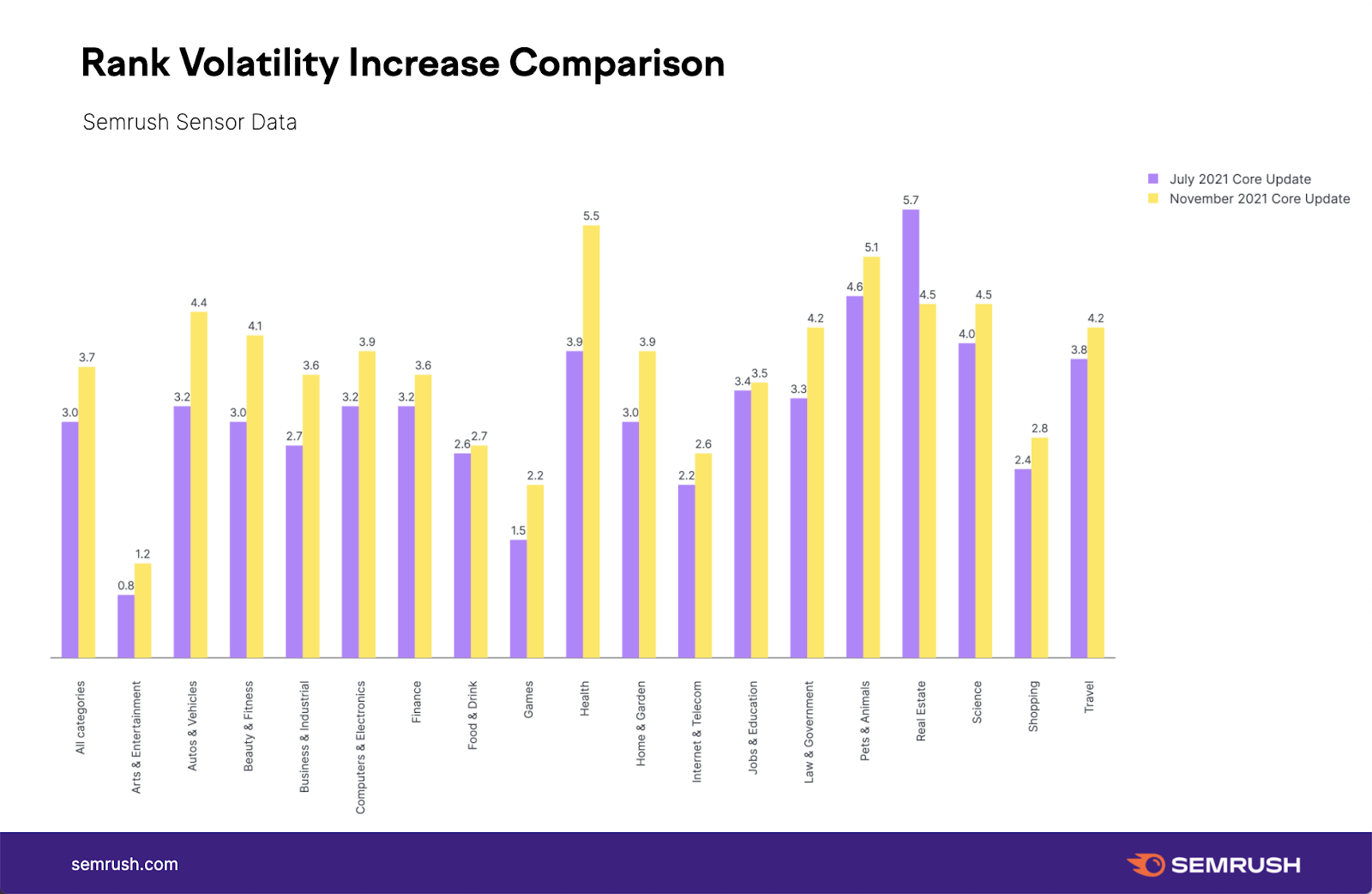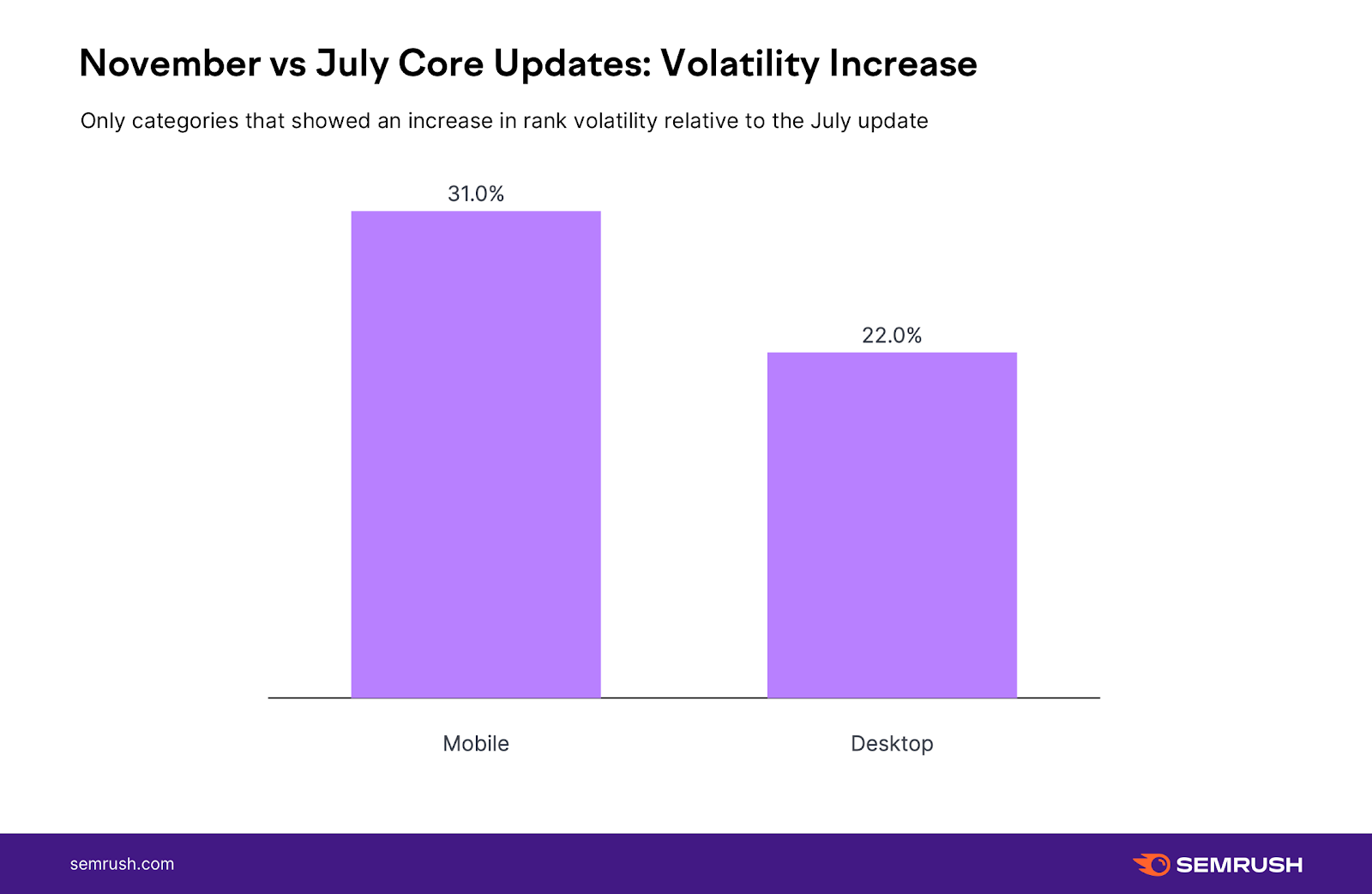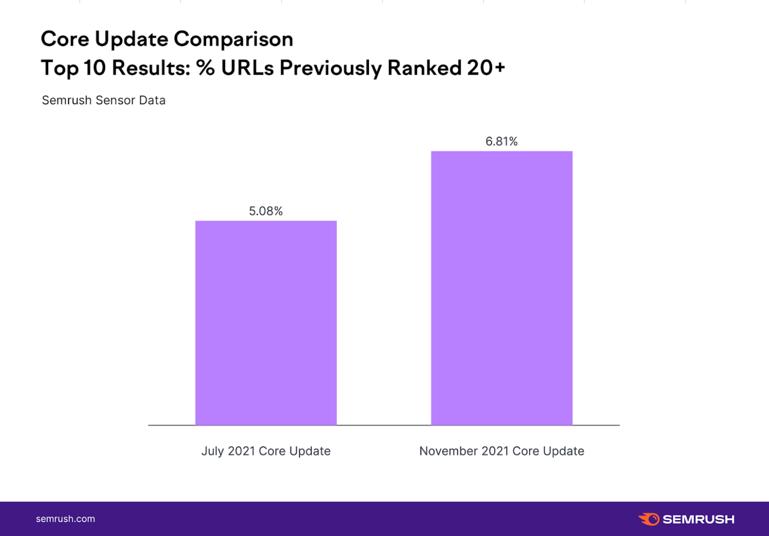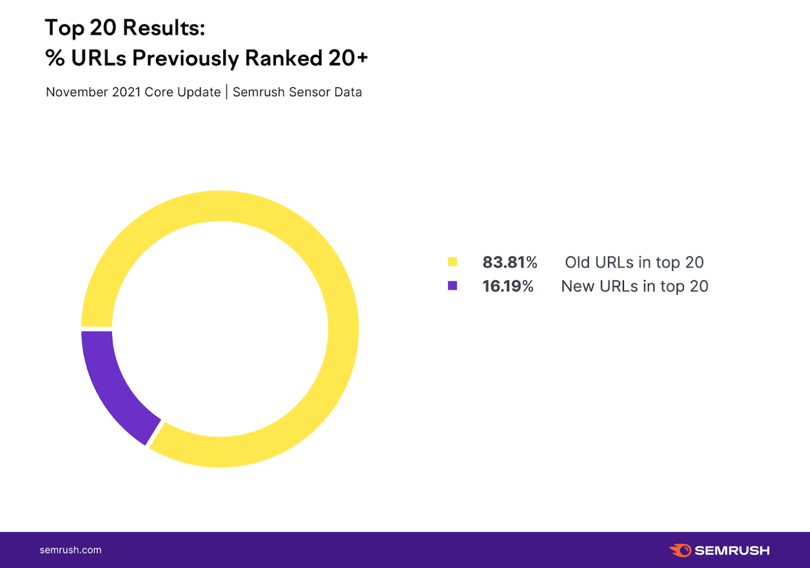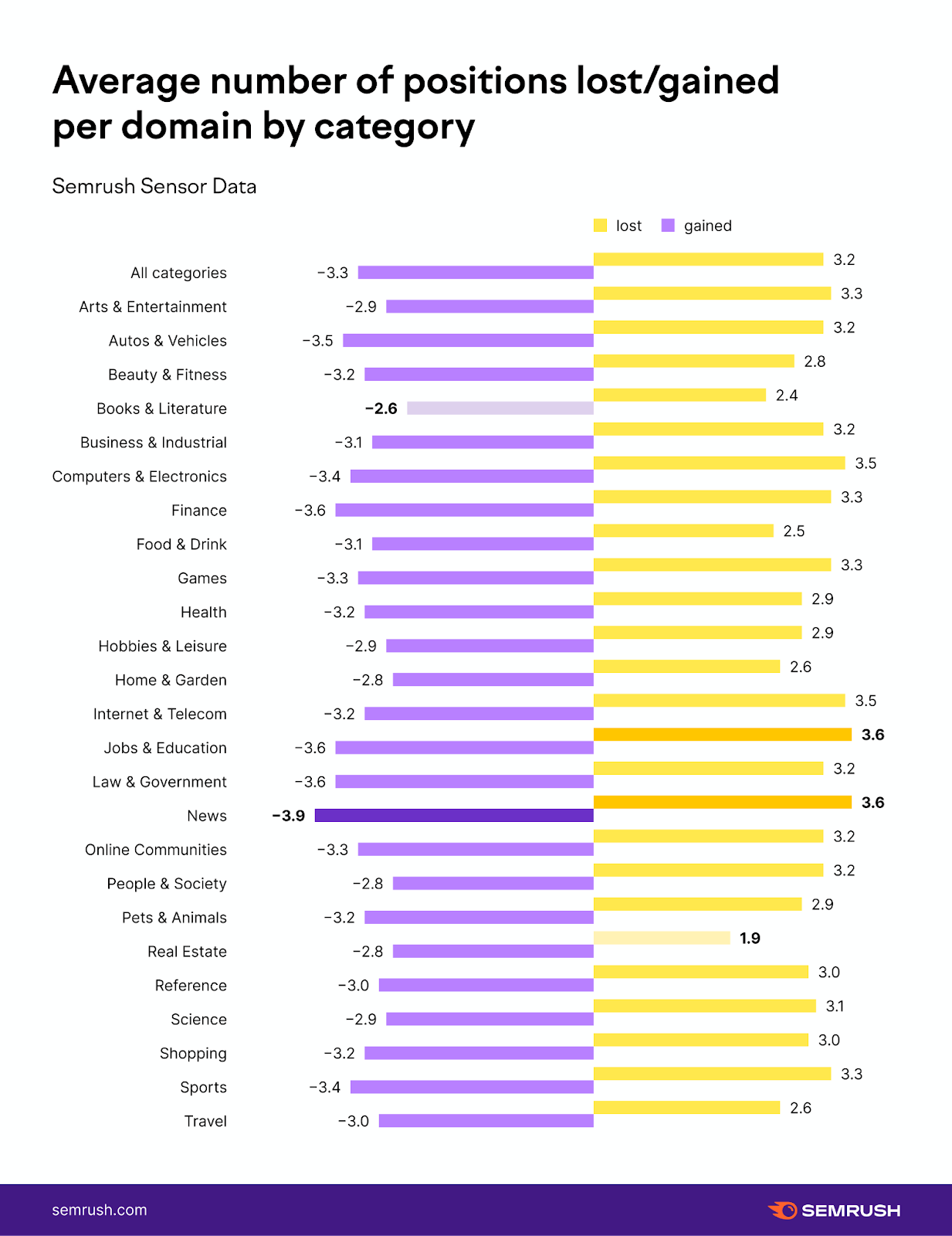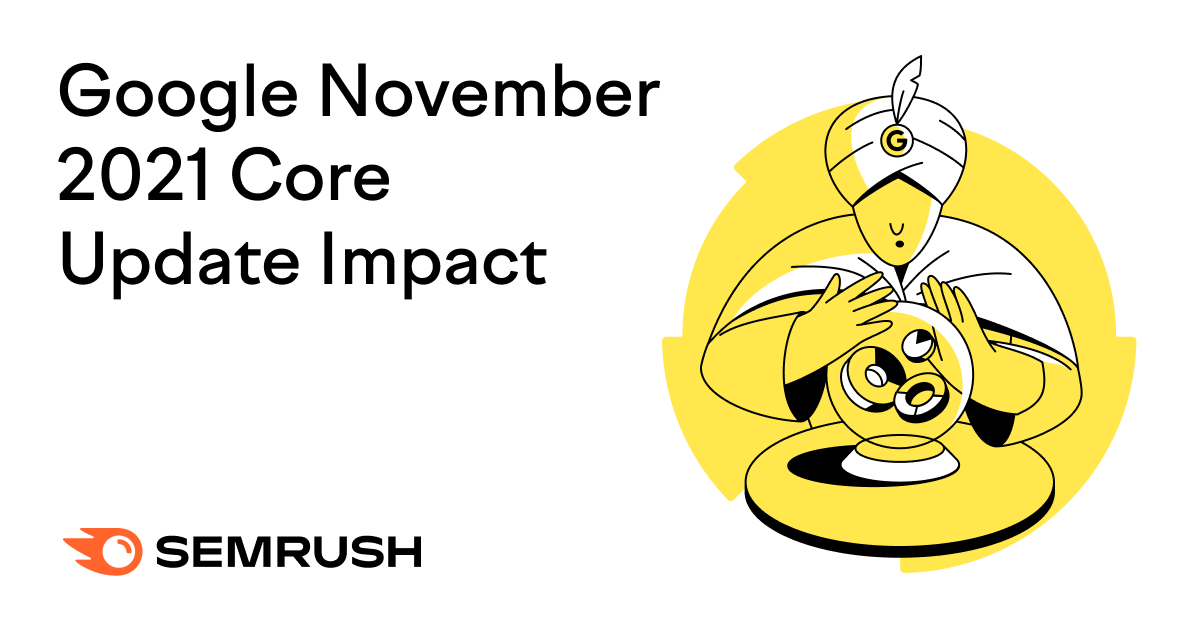
After about four months without any core updates, Google announced its November 2021 broad core algo update on November 17, 2021:
While Google itself confirmed that, as usual, we should give the update a week or two to fully roll out, we can already set some preliminary conclusions and start assessing the update’s aftermath.
November 2021 Core Update: The Initial Impact
Semrush Sensor went all red right on November 17, the first day of the algo update.
We saw a somewhat significant spike in volatility (Sensor’s average volatility was at a 9 out of 10 mark) that didn’t seem to last long. Only two days into the update, the overall SERP volatility scale looked as calm as if the storm had never taken place.
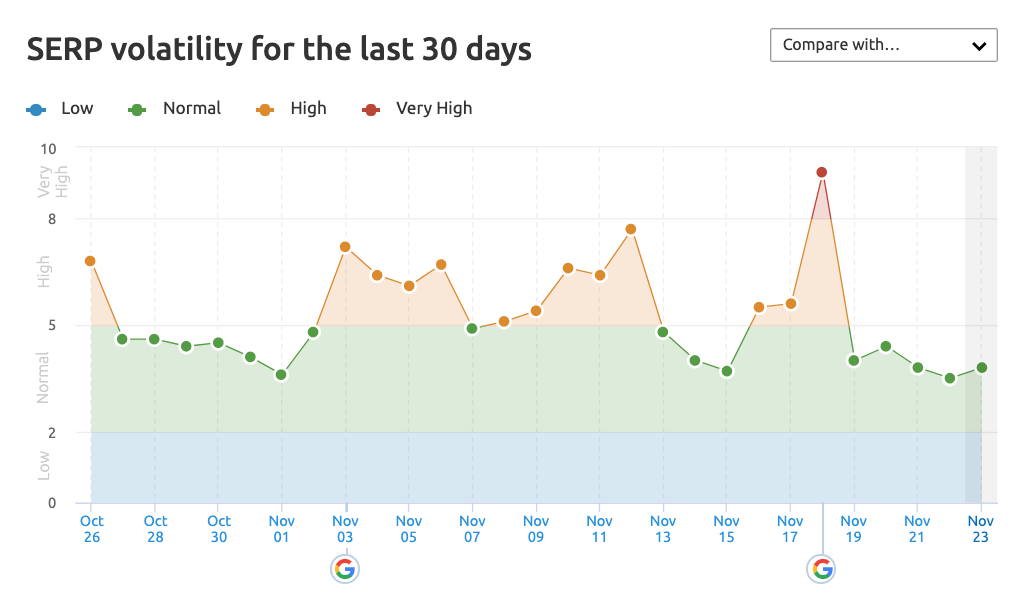
We saw a similar picture during the previous update in July, but this time, the return to “normal” came even faster.
We can’t be sure whether this implies that Google’s updates are getting less powerful, or we’re now in the calm before the storm. Read our latest write-up that analyzes and quantifies all the broad core algo updates for the past three years and tries to address these questions.
How Volatile Was the November 2021 Core Update?
Overall, the November update led to higher volatility than its July counterpart:
- Desktop SERPs witnessed 12% more volatility;
- Mobile SERPs were 23% more volatile during the November update.
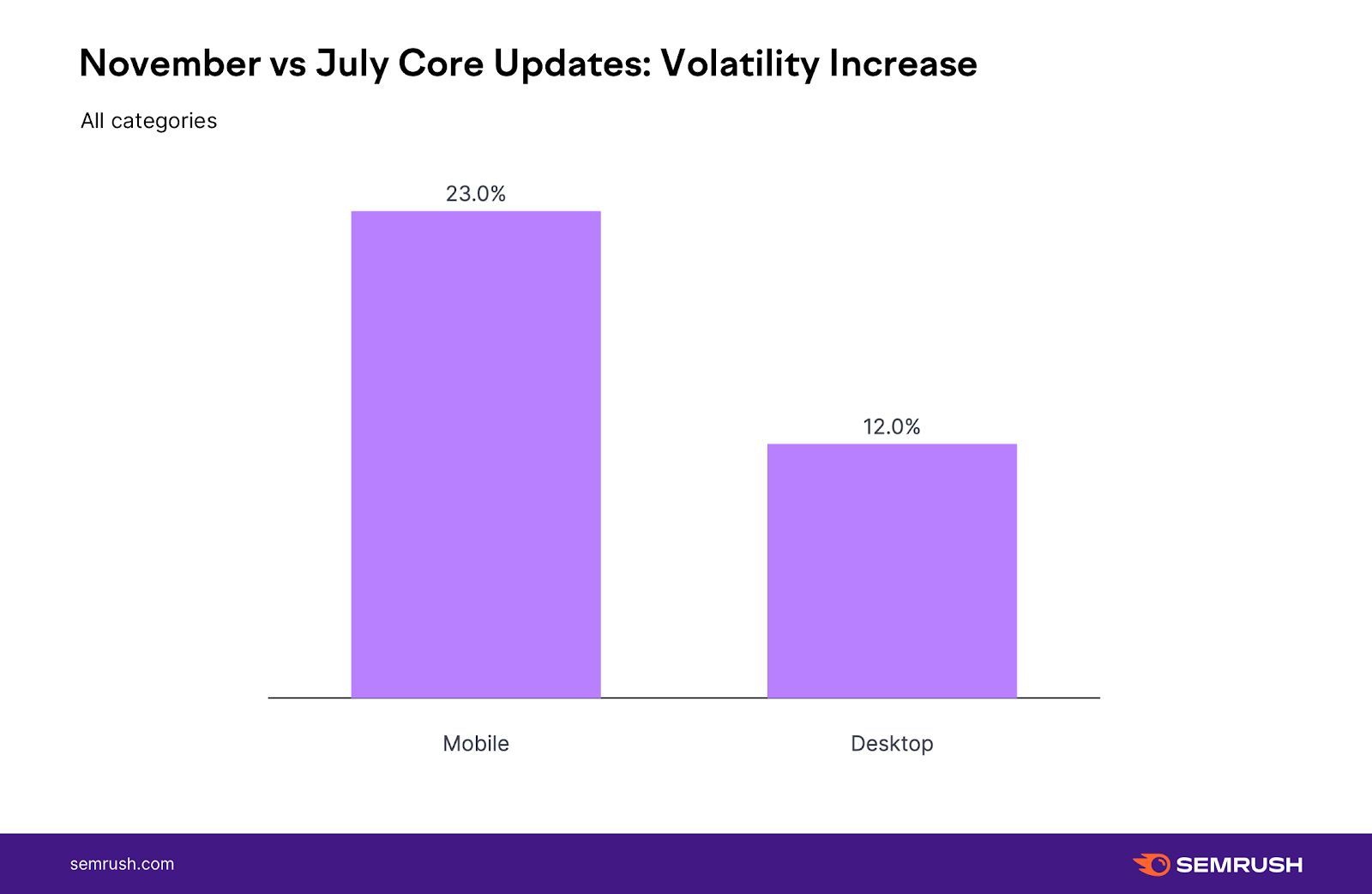
If you didn’t see extensive volatility on desktop, there was a great propensity for mobile shifts, so make sure to check your mobile rankings as well.
On an industry level, the November update also looks more volatile. Out of the 17 analyzed verticals, 16 show higher volatility throughout this month’s update compared to July. And overall, the average volatility across the industries in November is 20% higher than it was in July.

